How to cook smoky American-style barbecue at home (plus where to try it in Sydney and Melbourne)
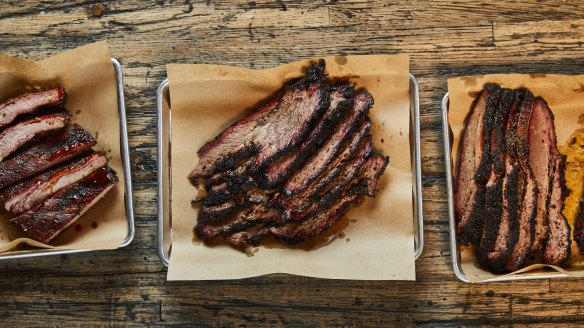
Don't take this the wrong way, but your barbecue could be better. Here's how to go low and slow in your own backyard.
Summer's at its height, and there's no better way to enjoy it than by firing up the barbie and cracking an ice-cold tin as you grill your bodyweight in chops.
But what if there was another way? One that would so completely impress family and friends you became known as Lord of the Flame, Queen of the Coals or something equally as majestic?
When we first started seeing American barbecue restaurants opening here about a decade ago, plenty thought it a fad. But not only is the number of eateries dishing up low-and-slow meats proliferating, it's also becoming a popular at-home pursuit. There are, for instance, almost 100,000 members of the Australasian Barbecue Alliance private Facebook group, where members share tips and tricks about cooking over wood and coal.
And tips and tricks, along with patience and practice, are essential to get the best from your smoker. We've rustled up three experts – Jay Beaumont, co-founder of barbecue festival Meatstock; Andrew Kavanagh, from Melbourne's one-stop barbecue shop and restaurant the Que Club; and pitmaster Adam Roberts, who helped launch the Australasian Barbecue Alliance in 2014 – to get you started.
Nothing but the smoke
First, you'll need a barbecue. According to Beaumont, there are two main types: affordable bullet smokers (expect to pay $250-$600) and offset smokers. "They're the ones where there's a big chamber and a fire box on the side," he explains. "The fire goes through the chamber then out through a big chimney at the other end."
An offset smoker will set you back at least $1,000 but, depending on your commitment, you could spend tens of thousands on a custom-built model.
Truth is, you've probably already got something you can use. "I like the kettle barbecue," says Roberts. "It's a very simple option, and a great place to start. I tell people just to start somewhere, because you do it a few times, you get a feel for it, you get a taste for the flavour then you progress."
Pellet grills are another newer option for anyone who's committed to low and slow, and Beaumont thinks it will bring this style of cooking into the mainstream.
"Bullet and offset smokers are quite labour intensive," he explains. "If you're doing an eight-hour cook, you have to baby it. You've got to be there every half an hour, throwing wood in, checking temperatures and doing all that stuff."
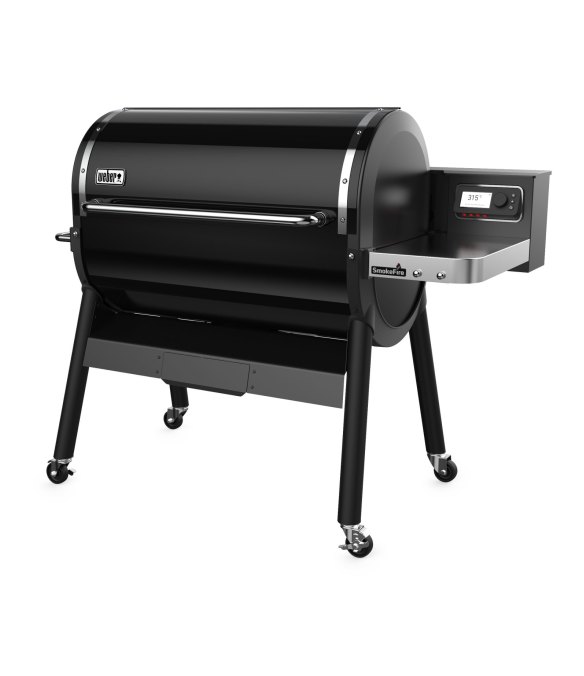
Whereas a pellet grill only requires the operator to fill a hopper with wood pellets. The attached barbecue automates the rest, adding fuel to the fire when required (for example the Weber SmokeFire pellet grill ($1999), pictured right).
All the gear
There are a few other items needed to get going.
"You want all-natural charcoal, something that's not full of chemicals and fillers," says Roberts, who's an ambassador for Kingsford Charcoal. "Start with a small briquette, which is very easy to light, but also gives you a beautiful flavour."
Charcoal will do the job, but to get the real smoked experience, you also need wood.
"In Australia we've gotten a bit confused about what woods we use for what," says Kavanagh. "The origins of low and slow come from America, and every state has its own wood. It's not because of the flavour, but because of what's prevalent. When you go to Texas, they have post oak and mesquite because mesquite's almost a noxious weed and post oak is everywhere. When you go to the Carolinas, they use hickory for their hogs because hickory grows there."
That's why many Australians use ironbark – it's easy to acquire and burns cleanly. Another popular option is fruit wood, such as apple. Beaumont prefers an alternative fruity timber: "I like using plum because it gives you a really deep purple smoke ring [around the brisket]."
Whatever you use, smoke shouldn't be billowing out of your grill. "It means your fire isn't combusting correctly," says Kavanagh. "It's going to taint the food, not elevate it."
Invest in a good digital thermometer (or two), since the temperature, both in the barbecue and within the meat, is paramount to getting a good cook.
The meaty bit
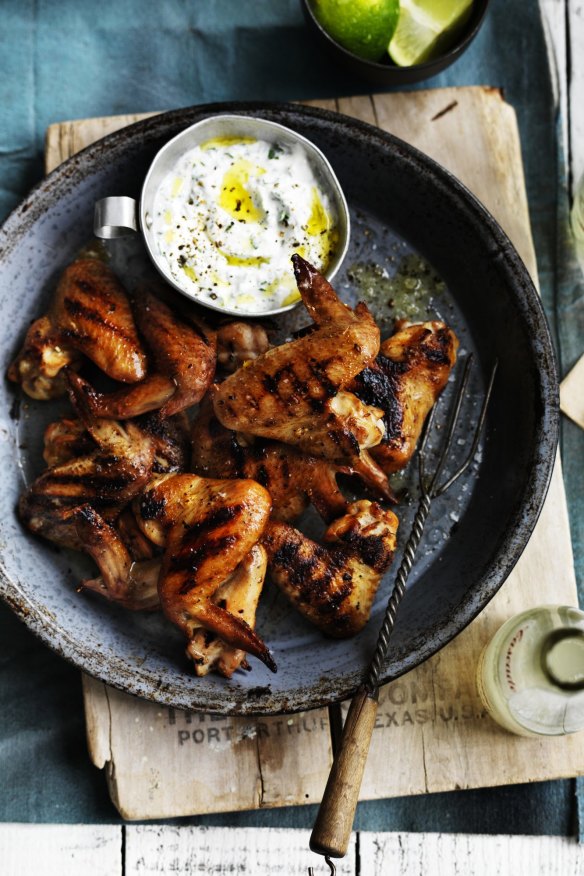
Many folks take a flying leap into what turns out to be the shallow end of the barbecue pool. They go to the supermarket, buy a piece of brisket and spend eight hours preparing a dry, tasteless chunk of awful.
"People disappoint themselves because they buy these small, not very well-marbled cuts," says Beaumont. "They get home and spend all this time cooking it and it's not tender."
Find a great butcher and start small. "I recommend starting with beef ribs," he continues. "They taste amazing. To me, they taste better than brisket and they're a lot easier to cook. Pork ribs are also very easy to do."
Roberts suggests starting with chicken wings (pictured). The main thing to remember is you need a fatty cut to help keep the meat moist during a long cook.
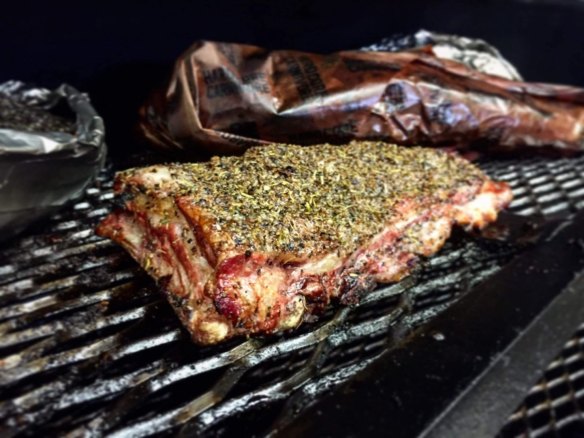
"The best rule of the thumb," says Kavanagh, "is any meat that can be braised can be smoked."
That's the reason why an Aussie favourite, although never seen in the USA, is great when given the low-and-slow treatment.
"Think about braising cuts of lamb – lamb shoulder, lamb shanks, lamb ribs (pictured)," he says.
"They're three cuts that are absolutely delicious and really encapsulate Australian culture. I prefer pulled lamb over pulled pork any day of the week."
When it comes to brisket, find a butcher who understands smokers and sources large, well-marbled pieces of cryovaced beef. You're looking for at least five kilograms for a good cook.
Season that stuff
In Texas it's all about a simple rub of salt and pepper. But not just any salt – it has to be kosher or flaked salt. If the grains are too small, you'll end up with meat that's too salty; too large and it will fall off and affect the all-important bark (crust).
You might add onion or garlic powder if you're cooking beef and paprika if you're doing chicken.
"There's a rub we sell at our micro-butchery that we call Magic Rub," says Roberts. "It's simply equal parts salt, pepper and brown sugar and it goes perfectly with just about everything."
Of course, you can make your own, but there are plenty of rubs on the shelves at the Que Club and other barbecue stores.
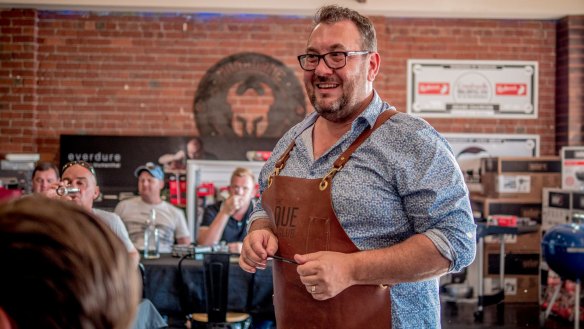
Just the basics
Many people have written entire books on the art of smoking, plus there are classes, festivals such as Meatstock (which returns to Sydney in August and Melbourne in October), and websites and YouTube videos that cover every style of barbecue and type of meat you could want to smoke.
Just remember, as Beaumont warns, that everyone in the scene speaks in degrees Fahrenheit, since it's a tradition from the US.
"The whole low-and-slow method is based on a temperature of 225F [107C]," he says. "However, most people I know cook at 275F [135C]. I don't think it makes that much difference, and it means that a 10-hour cook might take seven hours.
"In terms of the temperature of your meat – brisket, beef ribs, pork shoulder, lamb shoulder – when you pull it out and it's done, it's generally anywhere between 203F [95C] and 210F [99C]."
Other basics you need to know? Aaron Franklin of Franklin Barbecue in Austin, Texas – considered by many to be the best of the best – spritzes his brisket with either water or apple cider vinegar for the first two to three hours of cooking. Like many, he also wraps the meat in butcher's paper partway through the cook – usually when it hits between 150F [65C] and 170F [77C] and the bark (crust) is well formed. Some pitmasters prefer to use foil, which is fine for other cuts of meat, but can ruin the bark on a brisket and doesn't allow smoke to permeate through.
Allow time to rest the meat for an hour once you remove it from the smoker.
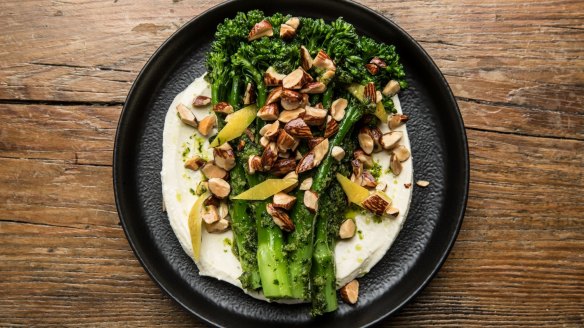
On the side
Head to barbecue restaurants and you'll likely be met with mac and cheese and cornbread. But this is summer and smoked meat is often heavy, so our Aussie experts have some favourites of their own.
"I love grilling greens on the barbecue," says Roberts. "Maybe some prosciutto-wrapped asparagus or even some smoked pumpkin."
Kavanagh likes a bit of acid – "anything that's going to cut through the fat" – in the form of a pickle or tart 'slaw.
"In the last hour of cooking you could also put some tomatoes [into the smoker]. You might just eat them with a bit of salt and pepper and olive oil, but once they wilt and blister they can also create a salad dressing to put on leaves. We've even experimented with putting a bit of goat's cheese in the smoker for the last hour. Throw it and the blistered tomatoes in with a mixed leaf salad.
"To me, this is a communal and casual way of eating. You get a real sense of achievement when you pull out this seven-kilo brisket from the smoker and you get to have 10 of your friends around to enjoy it. What's better than that?"
The American way
There are different styles of barbecue all over the south. These are the four main ones:
Texas
The Central Texas style is the one most people think of when they talk American barbecue. Beef rubbed with salt and pepper is king, and sauce is served on the side.
Kansas City
The signature recipe includes a sweet sauce made of tomato, molasses and (sometimes) brown sugar that is used as a marinade or is brushed over the meat immediately after cooking. Any meat, including chicken, is fair game.
Memphis
Expect pork ribs, either dry (rubbed with spices) or wet, where they're brushed with sauce before, during and after cooking. Pulled pork shoulder, served with a tomato-based barbecue sauce, is also popular.
Carolina
There's more pork – pulled, shredded or chopped – but this style is dry-rubbed with spices, predominantly cayenne pepper, then brushed with a tangy mix of vinegar and spice – that cayenne pepper again – during cooking.
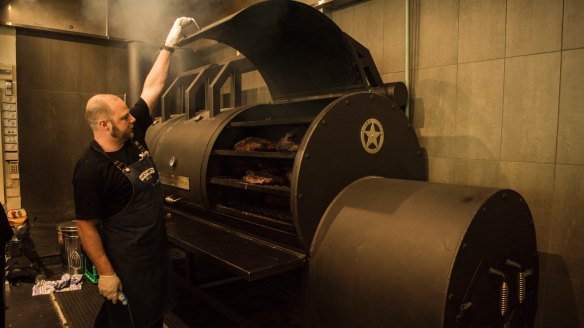
Five places to get your barbecue fix in Melbourne
Bluebonnet BBQ
Owner Chris Terlikar learned his craft in Austin, so the brisket is first rate. The sides are often just as good as the meat. If the miso-glazed brussels sprouts are on, order them.
124-126 Lygon Street, Brunswick East, 03 9972 1815, bluebonnetbbq.com.au
Red Gum BBQ
Native hardwoods are used in 12- to 16-hour cooks of locally sourced grass-fed brisket, free-range pork and housemade sausages, served up in a welcoming, rustic space that used to house a mechanics.
87 Arthurs Seat Road, Red Hill, 03 5989 3156, redgumbbq.com.au
Fancy Hanks
The big smoker called Puffing Billie cooks up brisket, pulled pork, chicken, sausages and beef and pork ribs. There are also options for vegans and vegetarians.
Level 1, 79 Bourke Street, Melbourne, 03 9453 2882, fancyhanks.com
Southern Grace Diner
Big Boy BBQ's Lance Rosen cooks up a meat-and-three storm – that's one meat and three sides – on Sundays from 11am. The menu goes up on the Facebook page on Tuesday.
764 Glen Huntly Road, Caulfield South, no phone, bigboybbq.com.au
Burn City Smokers Test Kitchen
A casual spot for folks to enjoy Burn City's smoked pork belly, brisket, ribs, kransky and cauliflower, alongside burgers and snacks. Dinner only from Wednesday to Saturday.
31a Vernon Street, South Kingsville, 03 9043 9554, burncitysmokers.com.au
Five places for smoky barbecue in Sydney
2 Smokin' Arabs
Pitmaster Nawaf 'Raf' Refai dipped his toe in competitive barbecuing in 2017 and now runs this food truck with a cult following. His brisket was given top gong at Meatstock 2019, so you know what to order.
2 John Street, Punchbowl, 0404 255 050, 2smokinarabs.com
Vic's Meat Market
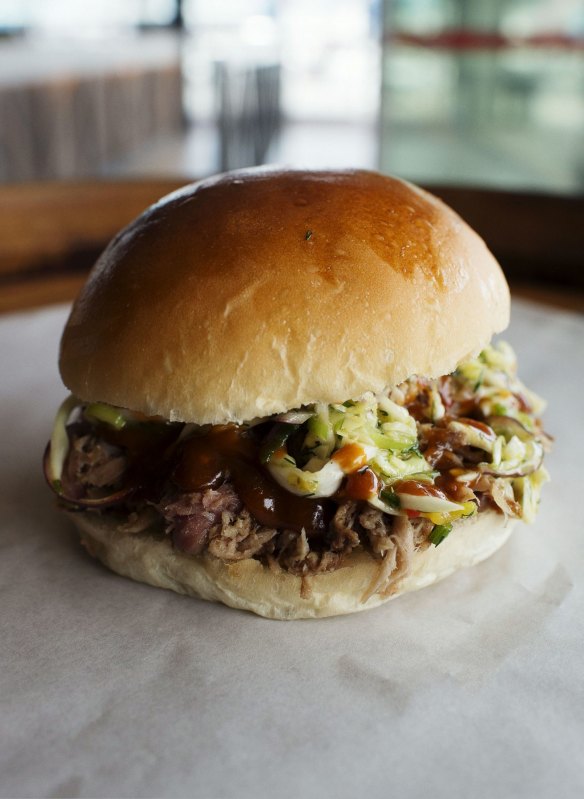
Boasting the biggest smoker in Australia, the smokehouse at Vic's fish market outlet does a lot of fan favourites, including pulled pork burgers (pictured), pork butt, burnt ends and BBQ Boston beans.
Sydney Fish Market, 50-60 Bank Street, Pyrmont, 02 8570 8570, vicsmeatmarket.com.au
Bottom of the Barrel
It's housed in a shipping container and home to six-metre-long smoker, built to emulate the pits at Franklin Barbecue. Juicy brisket and pulled pork, either in a roll or on a plate, are the order of the day.
35 Cahors Road, Padstow, 0492 809 606, facebook.com/bottomofthebarrelbbq
Surly's
From Friday to Sunday, this Surry Hills dive bar serves up $85 all-you-can-eat barbecue, cornbread, pickles and fries in two-hour slots.
182 Campbell Street, Surry Hills, 02 9331 3705, surlys.com.au
Blackbear Barbecue
It's open for breakfast, lunch and for dinner on Fridays. Think Texas-style, but smoked over ironbark. Get there early on Friday evenings, when there's live music and guest dessert trucks, too. Locations include Wetherill Park and Vineyard.
Shop 11, 27 Forge Street, Blacktown, 02 9672 3353, blackbearbbq.com.au
The best recipes from Australia's leading chefs straight to your inbox.
Sign up